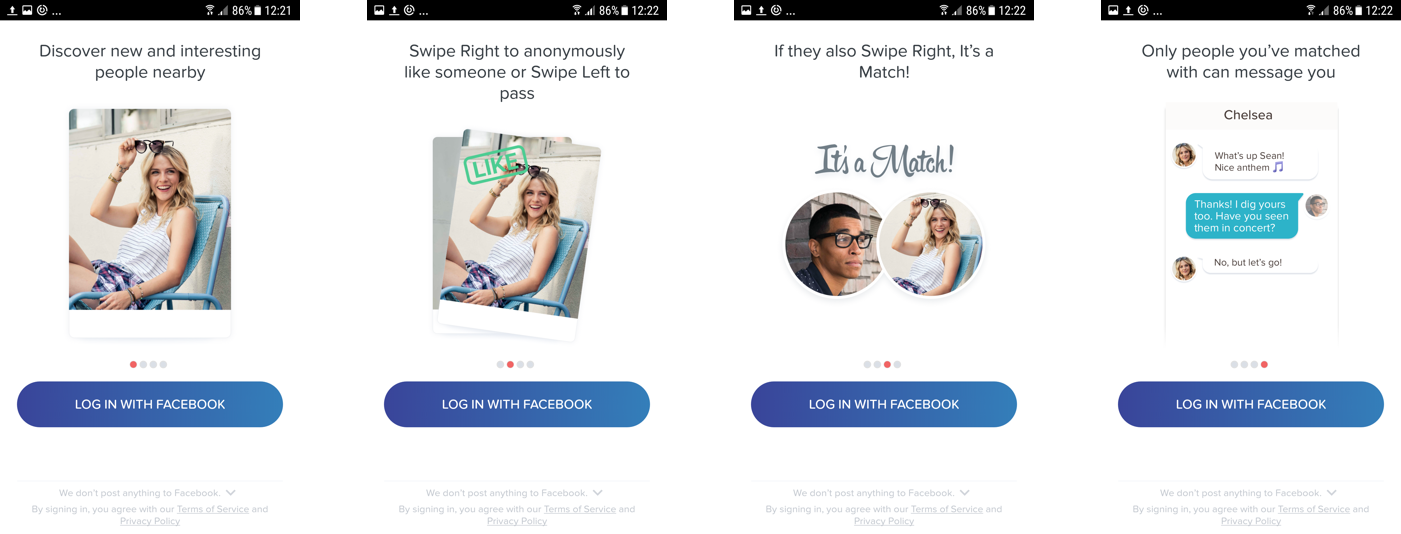Tinder has been downloaded over 50M times. We discuss growth lessons you can learn from the dating app’s astronomical growth.
 Tinder was launched in September 2012 but didn’t grow much in the first few months.
Tinder was launched in September 2012 but didn’t grow much in the first few months.
It was in 2013 that the location-based dating app gained massive popularity in the app world. In just over a year, Tinder had 10 million users and generated over 20 million matches.
By the end of 2014, Tinder had been downloaded over 40 million times.

How did Tinder achieve such staggering growth in a short amount of time in a niche that is pretty much considered to be saturated?
Short answer: Tinder did things differently. Long answer: read on in detail below.
1. Create a Flawless User Experience
One of the key levers to Tinder’s growth was its amazing user experience.
Before Tinder, all dating platforms were mostly web-based and pretty much the same. All of them would require you to create a lengthy profile of yourself to attract potential dates.
Tinder changed this. Tinder created a gamified experience that resembled how we make snap decisions in real life.
“WE WANT TO CREATE EXPERIENCES THAT EMULATE HUMAN BEHAVIOR. WHAT WE DO ON TINDER IS NO DIFFERENT THAN WHAT WE ALREADY DO.” – SEAN RAD, TINDER CEO
With a simple swipe to either left or right, with left meaning “No” and right meaning “Yes“, a user could express interest or disinterest in potential dates based on a few photos.

Only when a match is created (when two people swipe right to each other’s profile), would users be able to message each other.
2. Identify and Leverage the Right Network
“If you build it they will come” mentality doesn’t work anymore. No matter how awesome your product is, you still have to find a way to get the word out there.
Like most startups, Tinder faced a similar problem of getting people to use their app. They had a great product but they needed users.
Like most startups, Tinder faced a similar problem of getting people to use their app. They had a great product but they needed users.
Tinder faced the classic chicken and egg problem two-sided marketplaces face. They needed men and women on the platform to achieve liquidity.
Most importantly, they needed women first to get the guys to use it.
Whitney Wolfe, Tinder’s VP of Marketing at the time came up with a plan to recruit influencers on U.S. college campuses as brand ambassadors. This immediately fueled a network effect spreading the product across multiple campuses through word of mouth.
Soon Tinder downloads were being used as tickets to attend frat parties.
Wolfe also gave presentations about the app on various campuses and got people who attended the presentations to download the app.
As a result, Tinder became very popular among people between the ages of 18-23. To date, this age range makes up 57% of all Tinder users.
In a nutshell, Tinder created a product with an awesome UX experience and introduced it to the right audience who also had the power to promote it.
No comments:
Post a Comment